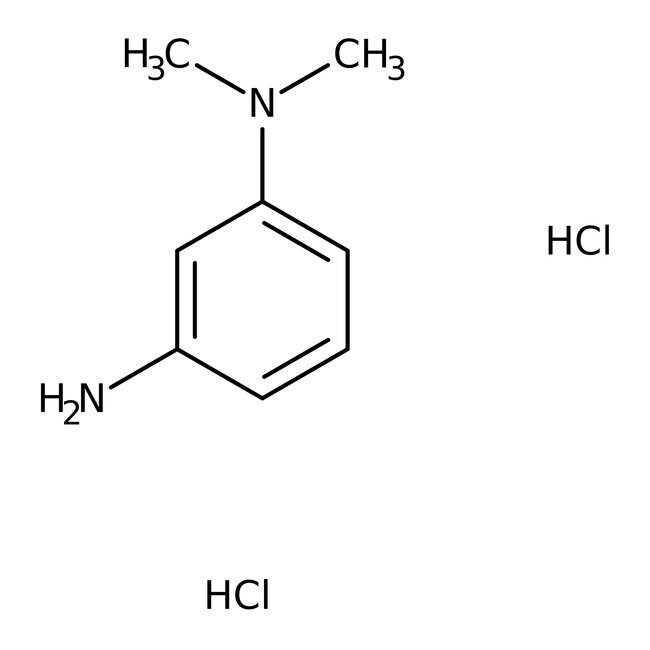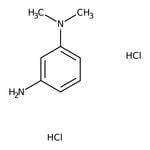Search Thermo Fisher Scientific
N,N-Dimethyl-m-phenylenediamine dihydrochloride, 99%, Thermo Scientific Chemicals



N,N-Dimethyl-m-phenylenediamine dihydrochloride, 99%, Thermo Scientific Chemicals
Chemical Identifiers
Specifications
Description
This Thermo Scientific Chemicals brand product was originally part of the Alfa Aesar product portfolio. Some documentation and label information may refer to the legacy brand. The original Alfa Aesar product / item code or SKU reference has not changed as a part of the brand transition to Thermo Scientific Chemicals.
it can be used to produce N-(4,5,6-trimethoxy-2,4-dimethyl-tetrahydro-pyran-3-yl)-formamide with 4,5,6-trimethoxy-2,4-dimethyl-tetrahydro-pyran-3-ylamine. This reaction will need solvent tetrahydrofuran. it is applied as a selective formylating agent for one of two amino groups in such basic amino acids as ornithine or lysine.
Solubility
Soluble in water, chloroform and dichloromethane. Slightly soluble in ethyl acetate.
Notes
Store away from oxidizing agents. Keep the container tightly closed and place it in a cool, dry and well ventilated condition.
Figures
Documents & Downloads
Certificates
Frequently asked questions (FAQs)
Citations & References
Safety and Handling
Classification of the substance or mixture
CLP classification - Regulation(EC) No 1272/2008
Label Elements
Signal Word
Danger
Hazard Statements
H301 + H311 + H331 - Toxic if swallowed, in contact with skin or if inhaled
H315 - Causes skin irritation
H319 - Causes serious eye irritation
H335 - May cause respiratory irritation
Precautionary Statements
P261 - Avoid breathing dust/fume/gas/mist/vapors/spray
P280 - Wear protective gloves/protective clothing/eye protection/face protection
P302 + P352 - IF ON SKIN: Wash with plenty of soap and water
P305 + P351 + P338 - IF IN EYES: Rinse cautiously with water for several minutes. Remove contact lenses, if present and easy to do. Continue rinsing
P280 - Wear protective gloves/protective clothing/eye protection/face protection
P301 + P310 - IF SWALLOWED: Immediately call a POISON CENTER or doctor/physician
P302 + P350 - IF ON SKIN: Gently wash with plenty of soap and water
P304 + P340 - IF INHALED: Remove victim to fresh air and keep at rest in a position comfortable for breathing
P312 - Call a POISON CENTER or doctor if you feel unwell